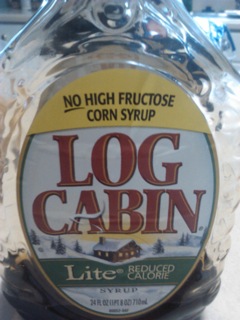Many people avoid “High Fructose Corn Syrup” (HFCS) because  they believe it is unhealthy and worse than regular sugar. Fears of HFCS are usually about obesity, cholesterol, diabetes, or even liver damage.
they believe it is unhealthy and worse than regular sugar. Fears of HFCS are usually about obesity, cholesterol, diabetes, or even liver damage.
The U. S. Department of Agriculture’s Economic Research Service found that in 1970 the average person consumed about 0.5 pounds of HFCS, while in the same year a person ate 16.8 pounds of other sweeteners. By 1999, consumption of HFCS reached its peak, with 63.7 pounds of HFCS per person and 22 pounds of other sweeteners per year. Then, as people became more health conscious, the amounts of sugar consumption decreased. In 2009, an average person consumed 50.1 pounds of HFCS and 17 pounds of other sweeteners per year.
HFCS is manufactured from corn syrup, which is primarily glucose, according to the Corn Refiners Association. An added enzyme converts some of the glucose into fructose, the same sugar found in fruits. Afterward, they are mixed together.
Mehmet Oz, who is often seen on Oprah and is a professor of surgery at Columbia University in New York, tells viewers that HFCS is bad. "It blocks the ability of a chemical called leptin, which is the way your fat tells your brain it's there,” Leptin is a protein hormone that regulates the amount of energy the body takes in.
“They are both natural,” says Neva Cochran, a registered dietitian on “MommyCast”, a videocast website for parents to get answers to their health questions concerning their children. “One [table sugar] comes from cane and one comes from corn.” Sugar cane and cornstarch are both natural ingredients, making respectively table sugar and high fructose corn syrup. Cochran also says that both sweeteners have the same calories, but HFCS reduces the tartness from acid ingredients, whereas table sugar just adds a sweeter taste. She believes that there are many benefits that HFCS can give to a product such as flavor to substitutes in food. Thus, HFCS is in more foods on the market.
A 2007 study done by Kathleen J Melanson, a researcher from the Department of Nutrition and Foods at the University of Rhode Island, found there were no differences in metabolic effects between cane sugar and HFCS. She studied lean women and recorded the effects of corn syrup and sugars.

This work is licensed under a Creative Commons Attribution-NonCommercial-NoDerivs 3.0 Unported License















